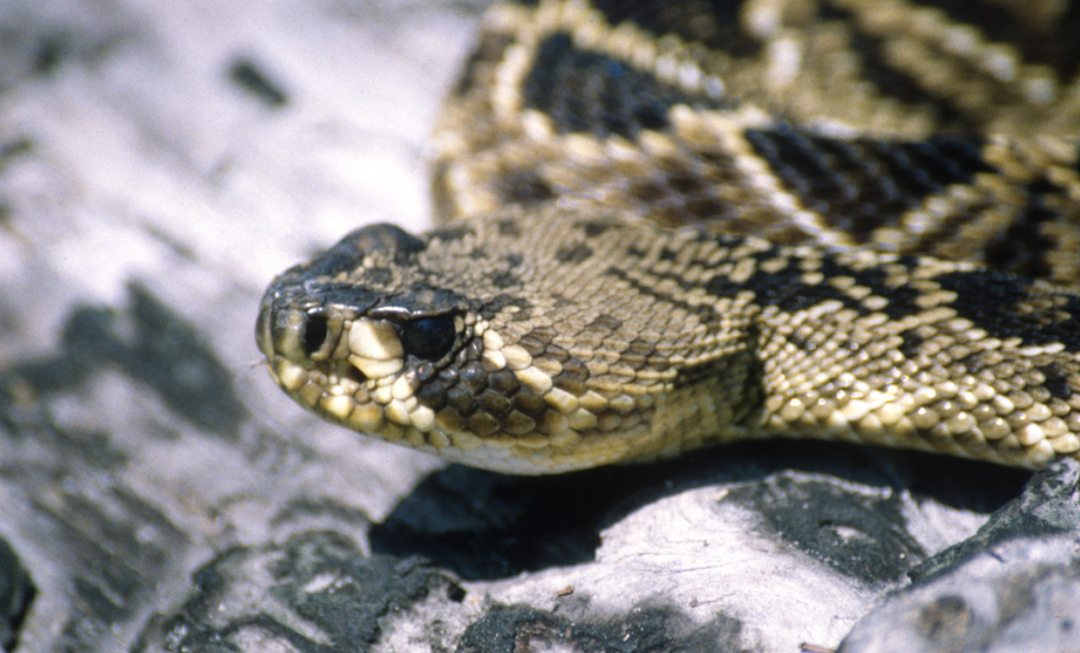Emory University researchers have found there is a significant jump in the likelihood of being bitten by a snake for every degree Celsius that daily temperatures increase.
The Emory-led study analyzed all emergency department visits reported by the Georgia Hospital Association from 2014 to 2020 – during which time there were more than 5,000 hospitalizations due to snake bites, including 3,908 reported venomous snake bites – and compared that data to the minimum and maximum temperatures, air pressure and humidity on the dates the bites occurred. The researchers then compared that data with the temperature on other days within the same month and on the same day of the week, which also helped account for variability in human activity.
The findings, which were published Tuesday in GeoHealth, found that the risk of being bitten by a snake increases 6% for every degree Celsius that daily temperatures increase.
“An increase in odds of snake bite by 6% per degrees Celsius is a strong effect and is certainly higher than what we often see from other types of health outcomes that are linked to heat,” says Noah Scovronick, PhD, an assistant professor of environmental health at Emory’s Rollins School of Public Health and the study’s lead author. “Our results show that we need to spend more effort understanding the potential health burdens from snakebite in the context of climate change. The large temperature effects we found, combined with the fact that snakebites often affect populations without access to adequate health care – particularly in other parts of the world – indicates that rising temperatures is a reason for concern.”
Scovronick emphasized the need for studies that explicitly estimate snakebite burdens under different climate scenarios, something this study did not do.
“As a research group, we are regularly investigating how weather and climate affect human health,” Scovronick added. “And snake bite is a health issue that really causes a surprisingly large health burden globally and one that is very well known to be understudied.”
Snakebite is classified by the World Health Organization (WHO) as a neglected tropical disease. The organization estimates about 5.4 million people worldwide are bitten by snakes every year, about half of which result in envenoming (poisoning) and of those, approximately 138,000 die.
“We already know a lot about how snakes respond to changes in weather and climate. They are cold-blooded, so outdoor temperatures are a strong driver of their internal body temperatures, and therefore their daily activities. But we know much less about how climate and weather in particular – meaning short-term changes in meteorology – drive those human-snake interactions,” Scovronick says. “That’s where we thought we could make a contribution, because we live in Georgia – which has a large concentration and diversity of snakes – and we also have a very high-quality statewide data set on hospital visits and why people end up in the hospital.”
Georgia is home to 45 snake species – the second most in the United States, behind only Texas –including 17 venomous species, seven of which are considered of primary concern to humans, says Lawrence Wilson, PhD, an adjunct professor and herpetologist at Emory’s College of Arts and Sciences and co-author of the study.
“As human development in Georgia and especially the Atlanta area are expanding rapidly, human-snake encounters are going to continue to increase and already have,” Wilson added. “Almost anyone who spends a lot of time outdoors will have encountered a copperhead or other venomous snake.”
The Emory study also compared how the increase of snakebites compared to data of hospitalizations due to other venomous creatures, such as spiders, scorpions and wasps, in order to better understand how much human behavior may have contributed to the increase of snakebites.
“It might have been that snakes are just doing the same thing every day and people just tend to go outside more and hike or work in their garden more when the weather is warmer,” Scovronick says. “But we found that the temperature effect for snakebite was higher than for the other types of envenomation, which suggests that there may be something unique about snake behavior that is contributing to the association with snakebite and temperature.”
The key factor to reduce snakebite risk is education, Wilson says. For example, people should know snakes favor habitats with extensive groundcover, like those with invasive English ivy.
“Snakes and people can live compatibly, as long as we respect and understand their habitats and needs,” Wilson says.

